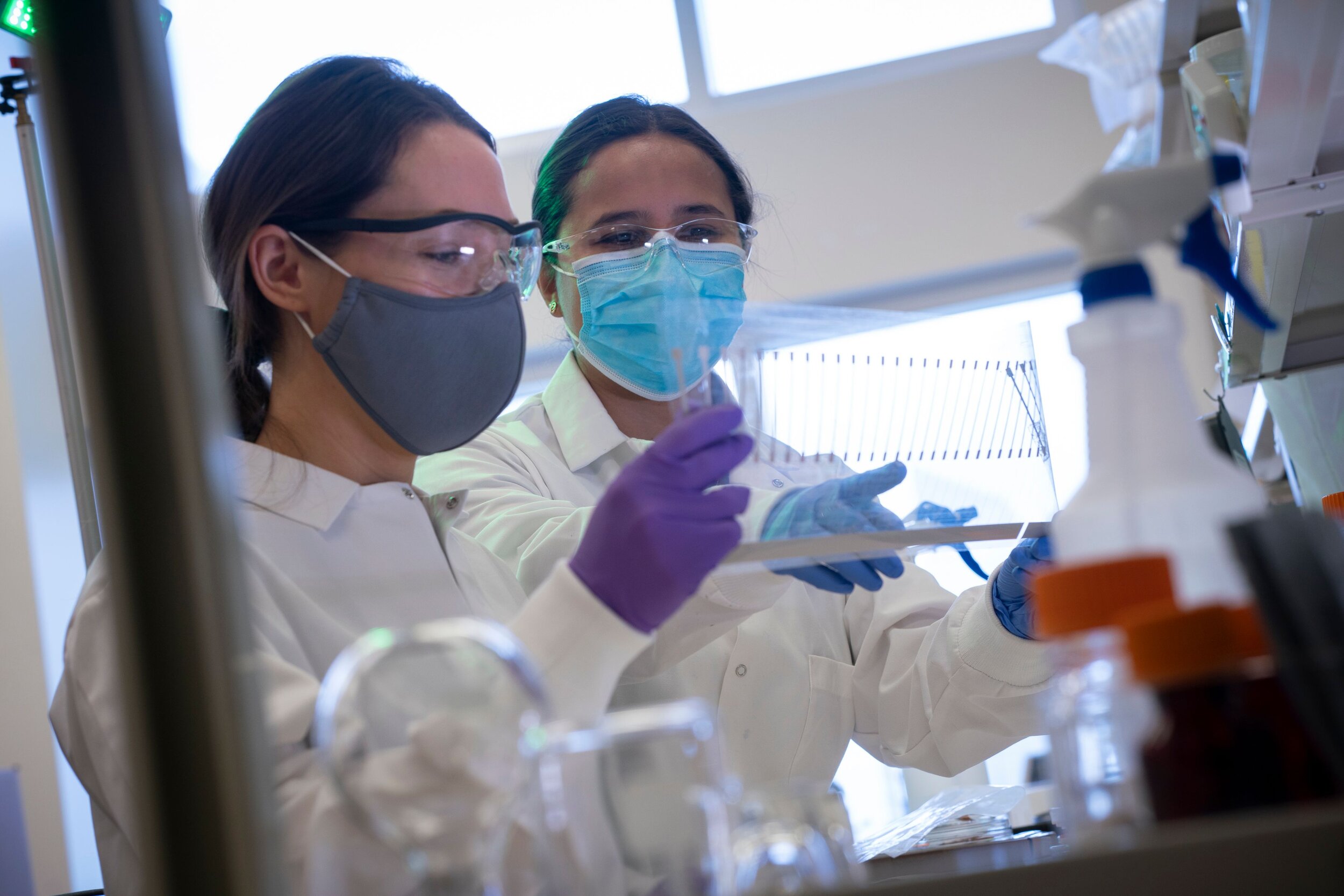Research in Stanciu group is interdisciplinary and focuses on the understanding of nanobioengineering principles and their translation into the design of novel devices. Hybrid functional materials, coupled with nanobioengineering principles have the potential to transform disease diagnostics, related to human health both directly, via healthcare applications, and indirectly, as related to food, water, agriculture and the environement. We seek to understand how nano- and bio-materials surfaces and interfaces, biological and chemical functionalization, along with large scale manufacturing parameters translate into heightened performance of detection devices.
Biofunctionalization for whole-cell detection of pathogens, detection of toxins and disease markers
Aptamers are DNA fragments that have the ability to bind to a large array of targets. Exploring the use of aptamers in the creation of functional nanobiosensors is anone focus of our laboratory.
Aptamers maintain the specificity of antibodies, at a fraction of the cost. Moreover, aptamers are much more stable under harsh environmental conditions compared to aptamers, making them especially suitable for being implemented into mass fabrication processes.
Design AND MANUFACTURING OF DETECTION DEVICES
Although there are tens of thousands of research articles focusing on flexible electronics or paper based devices being published yearly, very few of these devices meet the market.
In our group, we use nanobioengineering principles to inform manufacturing along the way of overcoming the challenges that stand in the way of translation from the laboratory to the market. Technologies our group uses include the design of 2D functional materials (MXenes, TMDs), inkjet printing of biological elements on paper based devices and roll-to-roll fabrication of flexible sensors.
Our group put forward:
The first aptamer-based whole cell lateral flow assay
The first ink-jet bio-patterning of aptameric inks
Statistical analysis based on image analysis of colorimetric test strips (signal quantification)
Novel carboxyl-DNA modification of aptamers
In progress: SELEX process to fabricate aptamers in our own laboratory
2D functional materials provide for a wealth of extraordinary properties that can be harvested towards the fabrication of gas and volatile organic compounds detection devices. Our group focuses on MXenes, TMDs and graphene and their integration in such devices.



